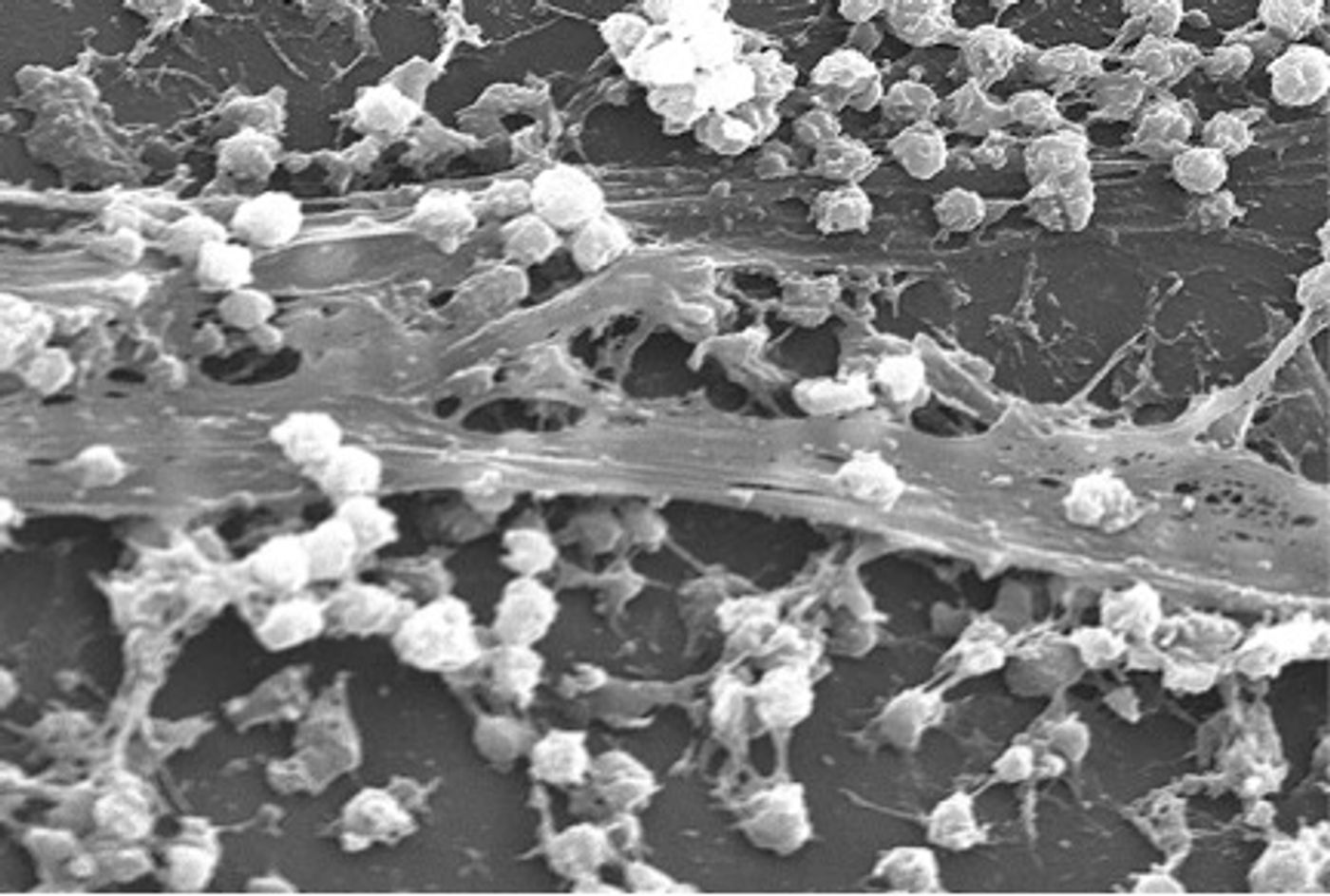Bacterial biofilms are among the biggest scourges in hospitals, causing infections that are difficult to treat because most are antibiotic resistant. However, scientists found that heating up a specialized form of nanoparticles can weaken the biofilm and make them easier to kill.
Microbial organisms are everywhere. We rarely take notice of these things in our daily lives; however they have a big presence in the hospital setting. In its planktonic form, the bacteria grow as single, independent cells, causing acute infections that can be treated with antibiotics. In its biofilm form, the bacteria exist as aggregated colonies that secrete a slimy film, which serves to protect them against the environment.
More than 80% of infections are attributed to biofilms. In addition to growing on medical devices like dialysis catheters and contact lenses, biofilms can also dwell inside patients -- in the respiratory, gastrointestinal and urinary tracts, oral cavities, eyes, ears, wounds, heart and cervix. Because the slime protects them against antibiotics, some infections by biofilms are resistant to drugs and develop into a chronic state.
Bacteria in biofilms multiply by dispersing individual cells from the colony. As in the planktonic state, these single cells are much less protected and more vulnerable to drug treatments. Exploiting this biological weakness, researchers at the University New South Wales in Australia found a way to trick the biofilm to disperse into single cells more frequently.
Lead by Drs. Cyrille Boyer and Nicolas Barraud, the scientists treated the biofilm with iron oxide nanoparticles and then heated it with a magnetic field. By raising the temperature by at least 5 degrees Celsius, the team found that the biofilm easily shed into single colonies. A polymer coating on the iron oxide nanoparticles facilitated and maintained this dispersed state.
Using the opportunistic human pathogen
Pseudomonas aeruginosa as a model organism, Boyer’s team found that the antibiotic gentamicin killed more bacteria treated with the heated nanoparticles.
Once dispersed, the bacteria are easier to deal with, creating the potential to remove recalcitrant, antimicrobial-tolerant biofilm infections. – Dr. Boyer
The study has huge positive implications for the clinical setting where biofilm infections are rising. If this polymer-coated iron oxide nanoparticle technology can be implemented in hospitals it could dramatically decrease hospital-acquired infections.
Here's another way that scientists are tackling the bacterial biofilms:
Sources:
Nature Open Reports,
UNSW Press release









